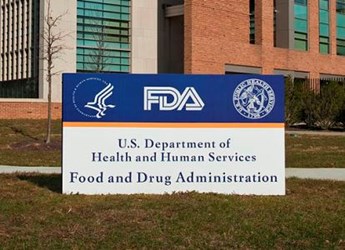FDA Draft Guidance Describes Benefit-Risk Factors For Device Compliance, Enforcement Decisions
By Jof Enriquez,
Follow me on Twitter @jofenriq

The U.S. Food and Drug Administration (FDA) has issued draft guidance describing the benefit and risk factors FDA may consider in prioritizing resources for compliance and enforcement efforts to maximize medical device quality and patient safety. By explaining its current thinking on how it considers benefit and risk, FDA says it can help industry improve medical device quality and patient safety.
FDA says it must be cautious in determining benefits and risks due to the potential for compliance and enforcement actions – such as product recall or withdrawal – to negatively impact patients, notes the Regulatory Affairs Professionals Society (RAPS).
The agency also says that, in order to meet its mandate to protect public health, it needs to consider both the impact of devices on patients and the manufacturer's approach to mitigate that impact.
"When making medical device product availability, compliance, and enforcement decisions informed by benefit-risk, FDA may consider relevant, reliable information relating to patient perspectives on what constitutes meaningful benefit, what constitutes risk, and what tradeoffs patients are willing to accept, if such information is available at the time of decision, as well as what alternatives are available," FDA writes in the draft guidance.
"Before arriving at a decision, FDA may also consider the manufacturer’s approach to minimize harm or to mitigate the increased risks that result from regulatory non-compliance or nonconformity of the product, their compliance history, and the scope of the issue," add FDA.
FDA identified and described the following factors that it will consider in assessing medical device benefits:
- Type of benefit(s)
- Magnitude of benefit(s)
- Likelihood of patients experiencing one or more benefits
- Duration of effects
- Patient preference on benefit
- Benefit factors for healthcare professionals or caregivers
- Medical necessity
To assess medical device risks:
- Risk severity
- Medical device-related deaths and serious injuries
- Medical device-related non-serious adverse events
- Medical device-related events without reported harm
- Duration of harm to patient
- Likelihood of risk
- Likelihood of medical device nonconformity
- Likelihood of a harmful event given exposure to a nonconforming device
- Number of patients exposed
- Nonconforming product risks
- Duration of exposure to population
- False-positive or false-negative result
- Patient tolerance risk
- Risk factors for healthcare professionals or caregivers
Additional risk factors to consider:
- Uncertainty
- Mitigations
- Detectability
- Failure mode
- Scope of the device issue
- Patient impact
- Preference for availability
- Nature of violations/Nonconforming product
- Firm compliance history
FDA appended to the draft guidance three benefit-risk benefit-risk assessment worksheets, which FDA staff and industry should use in assessing aforementioned factors for product availability, compliance, and enforcement decisions at all phases of the total product life cycle. FDA also provided hypothetical or simplified real-world situations to illustrate how it might come up with a decision based on the benefit-risk framework described in the draft guidance.
These situations include, for example, evaluation of device shortage situations; selection of the appropriate regulatory engagement mechanism following an inspection, during which regulatory non-compliance was observed; evaluation of recalls; and consideration of petitions for variance from those sections of the Quality System (QS) regulation (21 CFR part 820) for which there were inspectional observations during a Premarket Approval (PMA) pre-approval inspection.
The draft guidance is not meant to reflect FDA thinking on decisions such as premarket notification (510(k)), substantial equivalence determinations, de novo classification, and PMA Humanitarian Device Exemption (HDE) or IDE application approval decisions.
